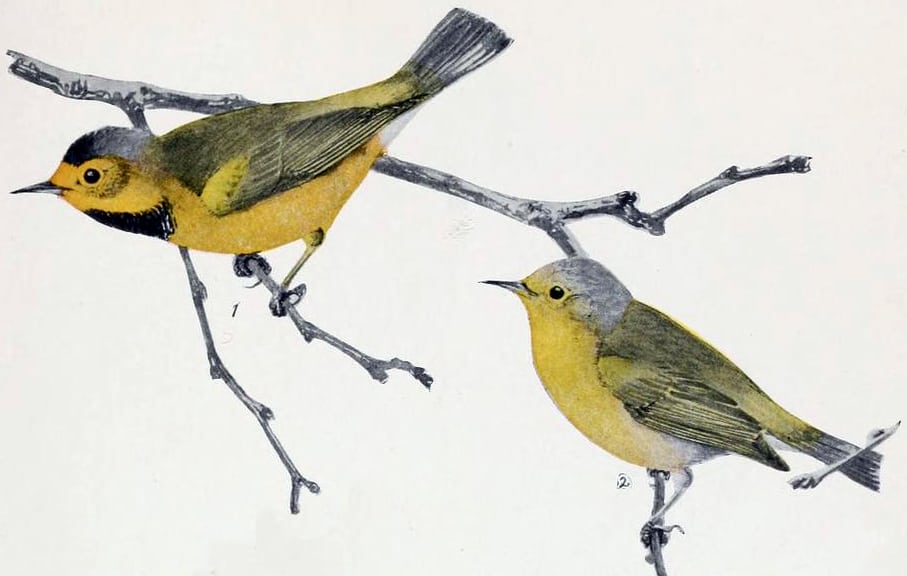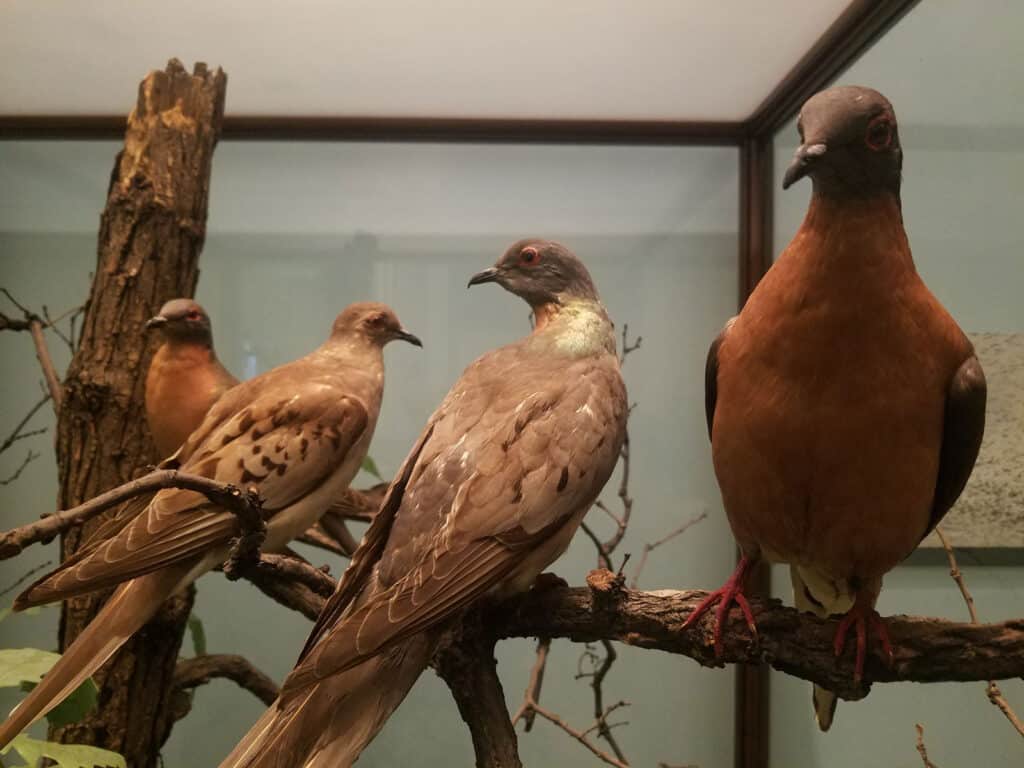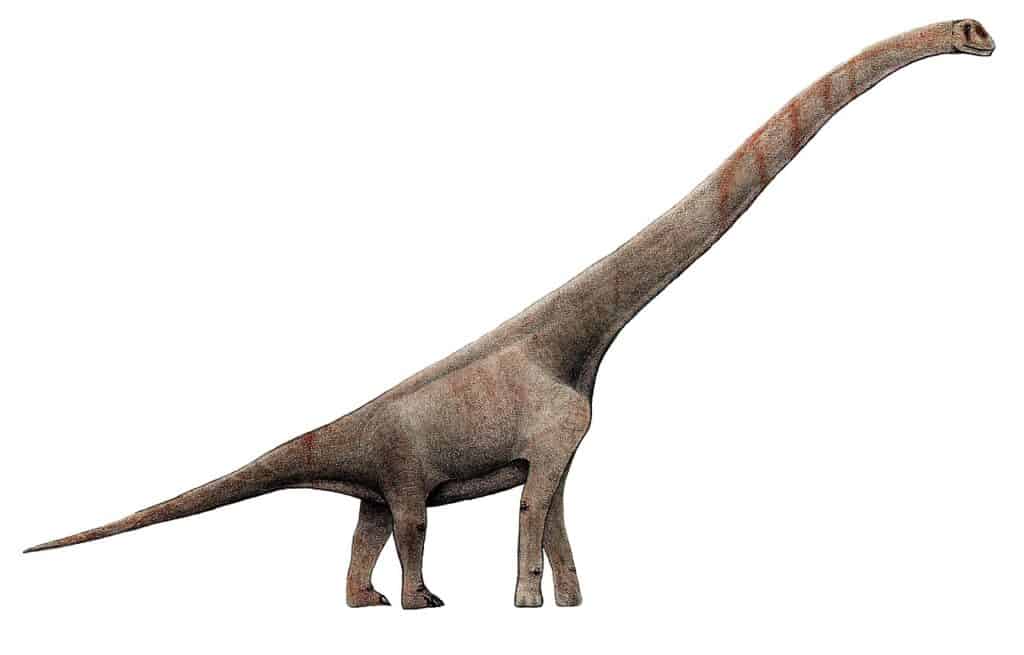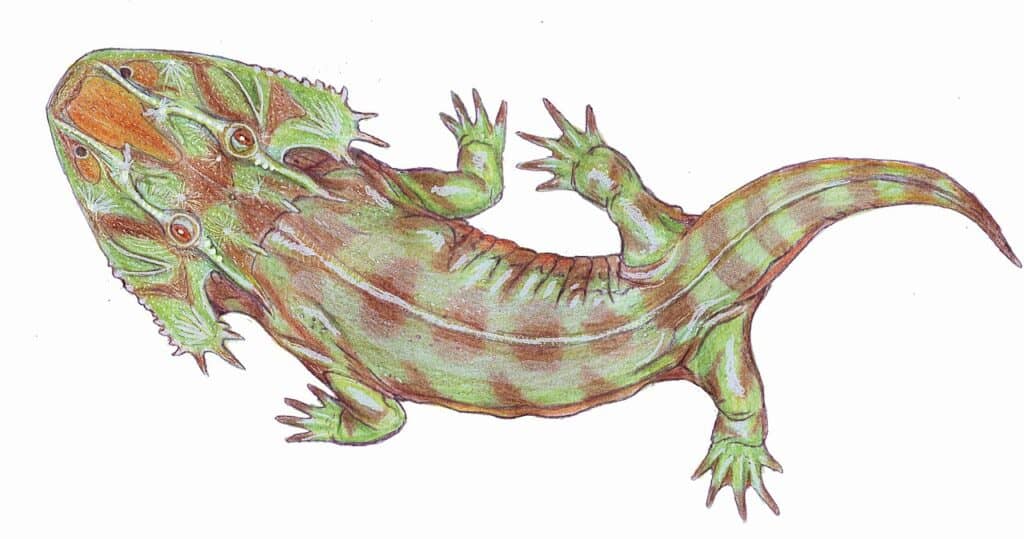Texas is located in the South Central region of the United States. It borders Louisiana to the east, Oklahoma to the north, and New Mexico to the west.
Although Texas is one of the states in the U.S. with deserts, its entire land area contains less than 10% of deserts, while the rest are mainly grasslands, forests, and coastlines. This diverse land area and geographic features have allowed Texas to be a haven for numerous people from contrasting backgrounds. The Lone Star State is the second largest U.S. state by population and area. Texas has a population of more than 29 million residents.
It is also quite important to know that Texas is also a site for fossils. A large number of fossils found in U.S. museums came from Texas. These fossil records spanned from the Precambrian age to the Pleistocene era. They contained the remains of extinct creatures like brachiopods, trilobites, and cephalopods.
Check out the list of 5 animal species that used to live in Texas.
1. Bachman’s Warbler

The Bachman’s warbler was named by Reverend John Bachman in 1832.
©Louis Agassiz Fuertes / public domain – License
| Bachman’s Warbler | |
|---|---|
| Kingdom | Animalia |
| Phylum | Chordata |
| Class | Aves |
| Order | Passeriformes |
| Family | Canidae |
| Genus | Vermivora |
| Species | Vermivora bachmanii |
| Extinct Since | 1988 or 1960s |
The Bachman’s warbler is an extinct migratory bird that breeds in the thick and swampy forests of the United States. There were rumors that the Bachman’s warbler was recently sighted, but none has been proven true. Authorities believe the last sighting of this migratory bird was in 1988, while many still believe the last species was found in the 1960s.
The bird was named by Reverend John Bachman in 1832 when he found the species in Charleston, South Carolina. The average Bachman warbler is sexually dimorphic, and the adults have two different plumages.
In spring, the male Bachman’s warbler has a yellow forehead, a supercilium, and olive lores. The forecrown is black, and the rare is the same color as its lore. It has a yellow chin and upper throat with a darker shade of black down below. Also, their belly and underlain are white, giving the bird an attractive array of colors. In summer, their plumage looks fresher than that of the spring. The Bachman’s warbler measures up to 4.5 inches in length and has a short tail, which is relatively shorter than the other warbler species.
Experts believe the bird’s extinction is due to the crippling decline of deforestation and the winter hurricane of 1932.
2. Passenger Pigeons

Experts say that the passenger pigeon population was between 3 billion to 5 billion.
©ChicagoPhotographer/Shutterstock.com
| Passenger Pigeons | |
|---|---|
| Kingdom | Animalia |
| Phylum | Chordata |
| Class | Aves |
| Order | Columbiformes |
| Family | Columbidae |
| Genus | Ectopistes |
| Species | Ectopistes migratorius |
| Extinct since | September 1, 1914 |
Passenger pigeons were once found in Northern America in unbelievable numbers, as experts say their population was between the range of 3 billion to 5 billion. This makes it quite surprising to see their extinction. Passenger pigeons were the most abundant of this species in America, the continent, and the entire world. They could be seen in a massive population in the Great Lakes region, New England, and the flourishing forest of Eastern Texas.
Unlike regular small-sized birds, the passenger pigeons were 14 to 17 inches long and weighed 0.75 pounds. They were also sexually dimorphic and had many iridescent feathers on their necks. They fed primarily on tree nuts like acorns and berries and enjoyed devouring crops and farmlands. Their eating pattern was unlike other waves, as they swallowed acorns as a whole rather than pecking them out slowly.
Their incessant consumption of acorns made the settlers slaughter them in East Texas. The rural settlers kept domesticated hogs for food or sale, and these hogs also ate acorns. However, before the hogs could get acorns, the passenger pigeons would have eaten them. The settlers slaughtered passenger pigeons in large numbers to help provide more acorns for their hogs.
3. Paluxysaurus

Paluxysaurus existed from 113 million years ago to 110 million years ago.
©Levi bernardo / CC BY-SA 3.0 – License
| Paluxysaurus | |
|---|---|
| Kingdom | Animalia |
| Phylum | Chordata |
| Class | Mammalia |
| Clade | Sauropoda |
| Genus | Sauroposeidon |
| Species | Sauroposeidon proteles |
| Living Period | 113 million to 110 million years ago |
Sauroposeidon, or Paluxysaurus, existed from 113 million years ago to 110 million years ago. They were initially described as the largest dinosaurs before the discovery of other sauropods. They were massive terrestrial habitats that depended on vegetation for nutrition.
They have a very long neck that allows them to eat the leaves on high branches of forest trees. Based on the fossil observations, the Paluxysaurus has four mid-cervical vertebrae and an extremely elongated neck that can be as long as 4 to 5 feet. Its neck bones are honeycomb-like with many air cells upon inspection. The cervical rib seems to be long and over 11 ft in length and can be said to be the most extended rib found in any mammal.
4. Zatrachys

Zatrachys is an extinct genus of the flat-headed zatracheid from the Early Permian of North America.
©Dmitry Bogdanov / CC BY 3.0 – License
| Zatrachys | |
|---|---|
| Kingdom | Animalia |
| Phylum | Chordata |
| Class | Amphibia |
| Order | Temnospondyli |
| Family | Zatracheidae |
| Genus | Zatrachys |
The first fossil of the Zatrachys was found in Texas. Edward Drinker Cope named it in 1878. The animal is an extinct genus of the flat-headed zatracheid from the Early Permian of North America. It can be easily identified by the presence of a large opening snout and the presence of a prominent spiky projection on its skull. Its lower jaw is adorned with ridges and bosses. This animal looked like a cross between a crocodile and a salamander and is often referred to as a queerly proportioned animal.
5. Merycoidodon

The Merycoidodon ancestors date back to the Eocene era.
©Heinrich Harder / public domain – License
| Merycoidodon | |
|---|---|
| Kingdom | Animalia |
| Phylum | Chordata |
| Class | Mammalia |
| Order | Artiodactyla |
| Family | Merycoidodontidae |
| Genus | Merycoidodon |
| Type Species | Merycoidodon culbertsoni |
| Extinct since | 30 million years ago |
Merycoidodon is an extinct genus of mammalians, popularly called Oreodon, ruminating teeth, or hillock teeth. It is native to the grassland regions, which include Florida and Texas, and was extinct almost 30 million years ago. The Merycoidodon ancestors date back to the Eocene era.
Upon fossil inspection, a Merycoidodon would resemble a pig but with varying qualities. It has a longer body and would be at least 4 to 5 feet tall with short, stubby limbs.
Merycoidodon seems to have loved places with rich and plentiful vegetation, as most of their fossils were found in the grasslands.
Summary of 5 Extinct Animals That Lived in Texas
Here’s a recap of the 5 animals which once inhabited the state of Texas that we took a look at:
| Number | Animal | Extinction Status |
|---|---|---|
| 1 | Bachman’s Warbler | Extinct due to deforestation and 1932 winter hurricane |
| 2 | Passenger Pigeons | Slaughtered by settlers who wanted acorns reserved for their hogs |
| 3 | Paluxysaurus | Lived 113 million to 110 million years ago |
| 4 | Zatrachys | First fossil found in TX; Edward Drinker Cope named species in 1878 |
| 5 | Merycoidodon | Extinct since 30 million years ago |
The photo featured at the top of this post is © Dmitry Bogdanov / CC BY 3.0 – License / Original
Thank you for reading! Have some feedback for us? Contact the AZ Animals editorial team.






